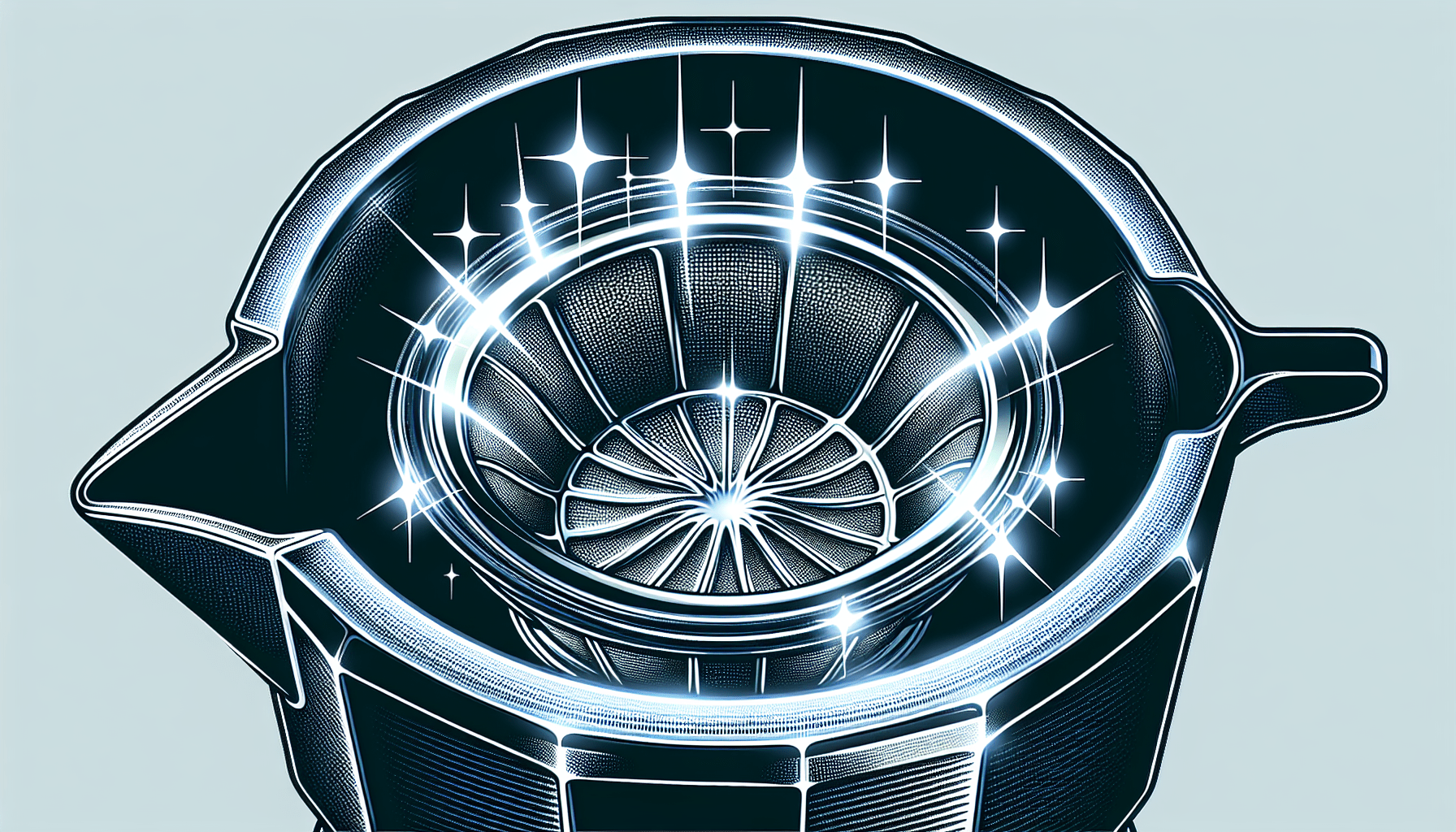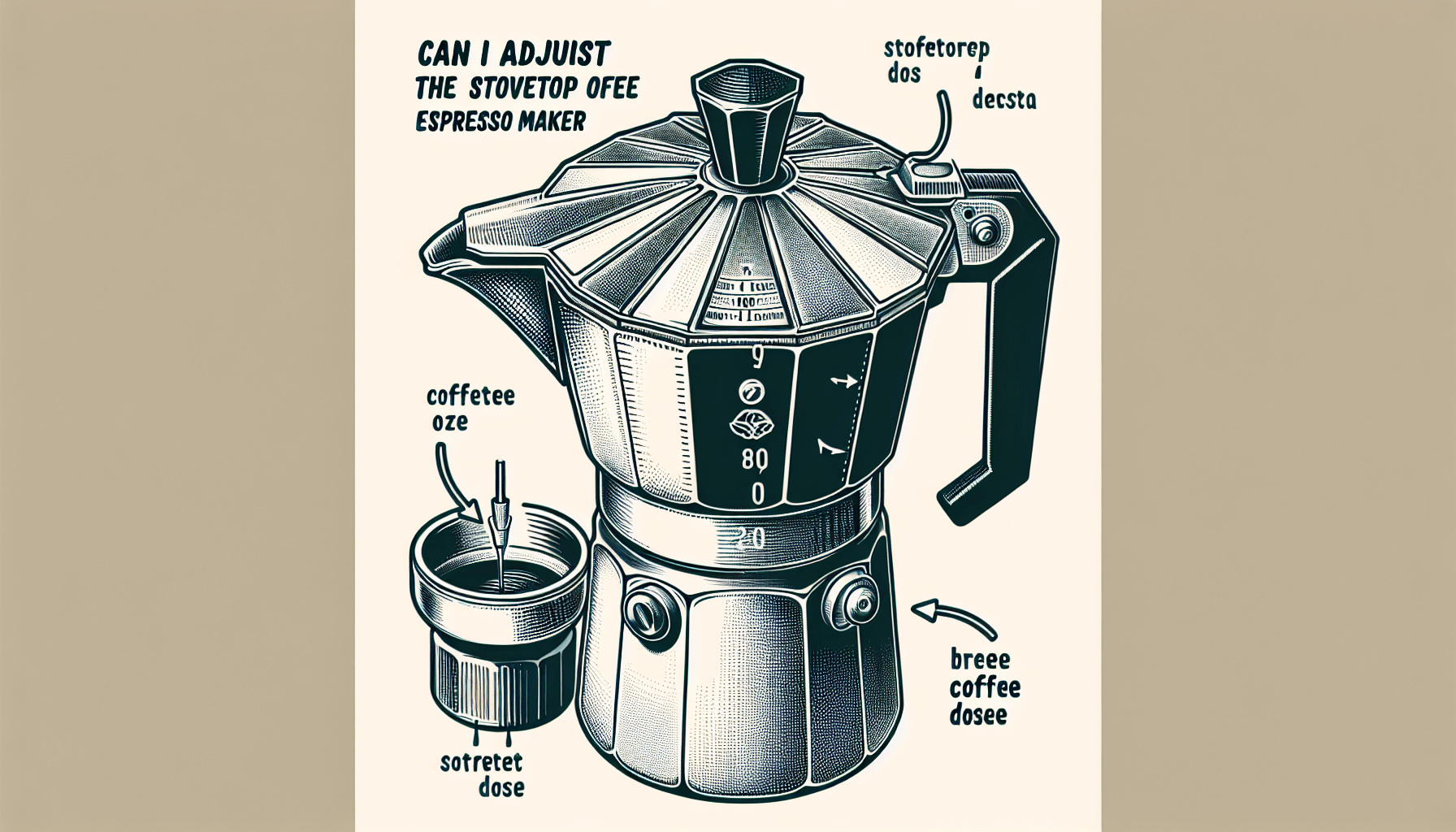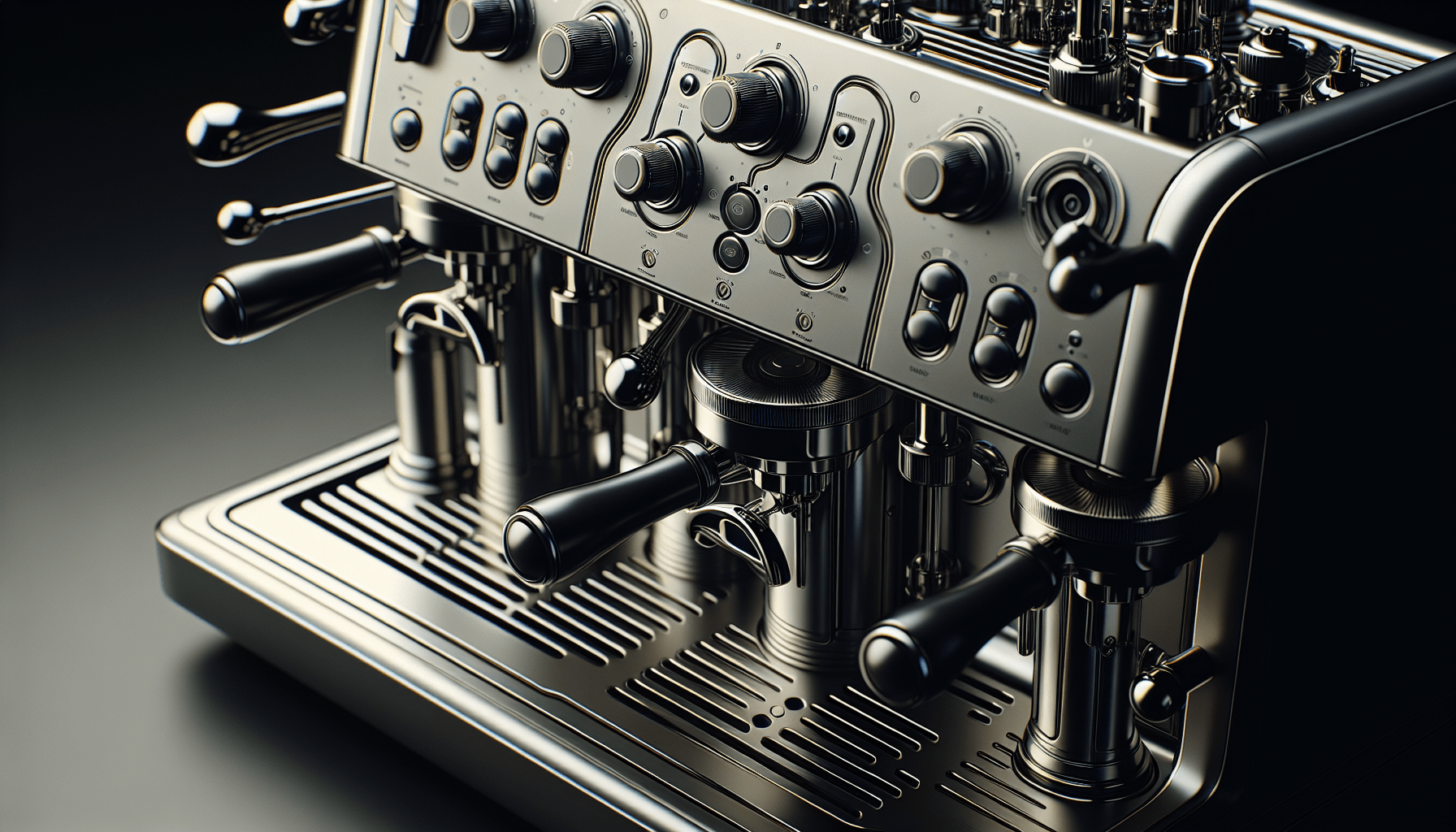Are you a fan of strong, rich espresso? If so, then you may be wondering how to achieve that perfect grind for your stovetop espresso maker. Don’t worry, because in this article, we’ll guide you through the steps to grind coffee beans specifically for a stovetop espresso maker. Whether you’re a coffee connoisseur or a beginner, this article will provide you with all the information you need to make a delicious cup of espresso at home. So grab your coffee beans and let’s get started!
Choosing the Right Coffee Beans
When it comes to making the perfect cup of stovetop espresso, choosing the right coffee beans is crucial. Consider the origin and roast level of the beans to ensure you get the flavors and aromas that you enjoy. Different coffee-growing regions offer unique flavor profiles, so explore options from various origins such as Ethiopia, Colombia, or Brazil.
Additionally, pay attention to the roast level of the beans. Generally, medium to dark roast coffees work best for stovetop espresso as they bring out the richness and intensity of the flavors. Light roasts may not provide the same depth of flavor needed for a strong espresso shot.
Opt for Whole Beans
To achieve the freshest and most flavorful cup of stovetop espresso, it’s always best to opt for whole beans rather than pre-ground coffee. Whole beans retain their flavors and aromas much better than ground coffee, which can quickly lose its freshness once exposed to air.
Investing in a good quality burr grinder allows you to grind the beans just before brewing, ensuring maximum freshness and flavor. This way, you can experience the true potential of your coffee beans and have more control over the grind size.
Avoid Oily Beans
When selecting coffee beans for your stovetop espresso, it’s wise to avoid overly oily beans. Oily beans tend to clog up the grinder, making it difficult to achieve a consistent and uniform grind. This inconsistent grind can result in an uneven extraction and impact the overall taste of your espresso.
Instead, look for dry or medium-roasted beans that have a smooth surface. These beans will grind more easily and produce a cleaner cup of espresso. Pay attention to the appearance of the beans and avoid those with a shiny or oily exterior.
Selecting the Right Grinder
Choosing the right grinder is another important factor in achieving a great cup of stovetop espresso. The grinder’s role is to break down the coffee beans into evenly sized particles, allowing for optimal extraction during brewing.
Choose a Burr Grinder
For the best results, it is recommended to invest in a burr grinder rather than a blade grinder. Burr grinders offer more control over the grind size and produce a consistent particle size distribution, which is crucial for achieving a balanced and flavorful espresso.
Burr grinders operate by crushing the beans between two burrs, resulting in a more uniform grind. This ensures that the water extracts the coffee evenly, leading to a more even extraction and better taste in your cup of espresso.
Avoid Blade Grinders
Blade grinders, on the other hand, use spinning blades to chop the coffee beans. While blade grinders may be more affordable, they often result in an inconsistent grind. The blades can create uneven particles, which can lead to over-extraction or under-extraction during brewing.
Blade grinders also generate heat during the grinding process, which can negatively affect the flavor of the coffee. Heat can cause the oils in the beans to evaporate and create a bitter taste. Therefore, it’s best to avoid using blade grinders for stovetop espresso preparation.
Consider Manual or Electric Grinders
When selecting a burr grinder, you have the option of choosing between manual or electric models. Manual grinders are often more affordable and portable, making them a suitable choice for those who prioritize simplicity and enjoy a hands-on brewing experience.
Electric grinders, on the other hand, offer convenience and consistency. They allow for faster grinding and often include features such as programmable grind settings and timers. Electric grinders are recommended for those who want precise control over their grind size and prefer a more automated brewing process.
Determining the Grind Size
The grind size is a critical factor that determines how quickly the water extracts the flavors from the coffee during brewing. Different brewing methods require different grind sizes to achieve the desired taste and extraction.
Understand the Importance of Grind Size
In stovetop espresso making, a fine to medium-fine grind is typically preferred. This finer grind size ensures that water can pass through the coffee grounds with the optimal amount of contact time, resulting in a rich and concentrated espresso shot.
Coarser Grind for Stovetop Espresso
Unlike other brewing methods, such as drip coffee or French press, stovetop espresso requires a slightly coarser grind. This allows the water to flow through the coffee evenly without becoming too compacted or over-extracted.
Experiment with Different Settings
Finding the perfect grind size for your stovetop espresso can be a trial-and-error process. Begin with a finer grind size and gradually adjust it coarser or finer based on the flavor and strength of the espresso you desire. Keep in mind that factors like bean origin, roast level, and personal preference can also influence the ideal grind size.
Measuring the Coffee-to-Water Ratio
The coffee-to-water ratio plays a crucial role in achieving a balanced and flavorful cup of stovetop espresso. By following the recommended ratio, adjusting it to suit your taste, and using a digital scale for precision, you can ensure a consistently delicious brew.
Follow the Recommended Ratio
As a starting point, most coffee experts recommend a ratio of 1:15, which means for every gram of coffee, you would use 15 grams of water. This ratio provides a well-balanced cup of espresso without being too weak or too strong.
Adjust the Ratio to Suit Your Taste
Feel free to experiment with the coffee-to-water ratio to fine-tune the taste to your preference. If you prefer a stronger espresso, you can decrease the water slightly. Conversely, if you find the flavor too intense, increase the water slightly.
Remember to take notes of your adjustments so you can replicate your desired taste consistently in future brews.
Use a Digital Scale for Precision
Using a digital scale is highly recommended to ensure accuracy and consistency in your measurements. Eyeballing the amount of coffee and water can lead to inconsistency between brews. With a scale, you can precisely measure the desired amount of coffee and water, allowing for more control over the final taste of your espresso.
Grinding the Coffee Beans
Once you have selected the right beans, grinder, and determined the desired grind size, it’s time to start grinding your coffee beans.
Clean the Grinder
Before grinding your coffee beans, make sure to clean the grinder thoroughly. Residual coffee oils and particles from previous grinds can build up and affect the taste of your espresso. Follow the manufacturer’s instructions for cleaning or refer to our guide on cleaning coffee grinders.
Measure the Desired Amount of Beans
Use a digital scale to measure the desired amount of coffee beans according to your chosen coffee-to-water ratio. This ensures consistency and accuracy in the final taste of your espresso shot.
Adjust the Grind Size Setting
Ensure that your grinder is set to the appropriate grind size for stovetop espresso. If you’re unsure about the setting, refer to the manufacturer’s guidelines or consult a coffee expert. Adjust the grind size accordingly and make sure the burrs are properly aligned to achieve a uniform grind.
Grinding Techniques for Stovetop Espresso
Grinding the coffee is only part of the process for brewing stovetop espresso. Proper grinding techniques can help ensure an even extraction and enhance the overall taste of your espresso.
Hold the Portafilter Firmly and Tap It
When grinding coffee directly into the portafilter, hold it firmly to prevent any movement or tilting. Gently tap or shake the portafilter during grinding to settle the coffee grounds and remove any air pockets. This will help achieve a level and even bed of coffee in the portafilter.
Avoid Pressing Too Hard
While it may be tempting to press down on the coffee grounds while grinding, this can lead to inconsistent extraction. Let the weight of the coffee grinder do the work and avoid applying excessive force. The goal is to achieve a uniform particle size distribution without compacting the coffee too much.
Distribute the Ground Coffee Evenly
After grinding, distribute the ground coffee evenly in the portafilter. This ensures an even extraction and prevents any areas from becoming over-extracted or under-extracted. Use your finger or a distribution tool to level the coffee bed, making it as flat and evenly distributed as possible.
Tamping the Ground Coffee
Tamping is the process of compacting the coffee grounds in the portafilter to create a level and even surface. Proper tamping ensures a consistent extraction and prevents water channeling, resulting in a more balanced and flavorful espresso shot.
Use a Tamper
Invest in a good quality tamper that matches the size of your portafilter. A tamper with a flat base allows for even pressure distribution, leading to consistent tamping. It’s worth noting that different espresso machines may require different levels of tamping pressure, so adjust accordingly.
Apply Firm Pressure
Place the tamper on top of the coffee bed and apply firm and even pressure, using your arm and body weight. The goal is to create a level and compacted surface, ensuring an even extraction. Avoid applying excessive force, as it can lead to channeling and negatively affect the overall taste of your espresso.
Ensure an Even Surface
After tamping, check the surface of the coffee bed to ensure it is level and even. If there are any uneven spots, use your finger or a distribution tool to gently level the surface without disturbing the compacted coffee underneath. This step helps promote an even extraction and enhances the consistency of your espresso.
Brewing the Espresso
After properly grinding and tamping the coffee, it’s time to brew your stovetop espresso. Follow these steps for a successful brewing process:
Preheat the Stovetop Espresso Maker
Before starting your brew, preheat the stovetop espresso maker by running it briefly with water, then discarding the hot water. This step helps maintain a consistent brewing temperature and ensures a well-extracted espresso.
Fill the Water Chamber
Fill the water chamber of your stovetop espresso maker with cold, filtered water up to the designated level. Avoid overfilling, as it can lead to over-extraction and potentially cause the espresso maker to malfunction.
Place the Portafilter and Brew
Attach the portafilter to the espresso maker and place it on the stovetop over medium heat. As the water in the lower chamber heats up, it creates pressure, forcing the hot water to pass through the coffee bed and extract the flavors. Monitor the brew closely and remove the espresso maker from the heat as soon as you hear a hissing or gurgling sound.
Adjusting the Variables for Taste
To achieve your preferred taste in stovetop espresso, it’s essential to adjust the variables based on your preferences and experiment with different settings.
Experiment with Grind Size and Coffee-to-Water Ratio
If you find that your espresso is too weak or too strong, consider adjusting the grind size and coffee-to-water ratio. A finer grind size typically yields a stronger espresso, while a coarser grind results in a milder cup. Similarly, increasing or decreasing the coffee-to-water ratio can also impact the strength and flavor profile of your espresso.
Take Note of the Extraction Time
The extraction time refers to the duration it takes for the water to pass through the coffee bed. Pay attention to the time it takes for your stovetop espresso to brew. If the extraction is too fast, it may result in an under-extracted and weak espresso. On the other hand, if the extraction is too slow, it can lead to over-extraction and a bitter taste.
Tweak the Variables to Achieve Your Preferred Taste
Adjusting the grind size, coffee-to-water ratio, and extraction time are all variables that can be tweaked to achieve your desired taste. Keep notes of your adjustments and make small changes to find the perfect balance that suits your preferences. Remember, it may take some trial and error to find your ideal cup of stovetop espresso.
Cleaning and Maintenance
To ensure the longevity and optimal performance of your coffee equipment, regular cleaning and maintenance are essential.
Empty and Clean the Grinder Regularly
After each use, empty the coffee grinder and brush out any residual grounds. This helps prevent the buildup of oils and particles, which can affect the taste of future brews. Additionally, follow the manufacturer’s guidelines for periodic deep cleaning to remove any trapped particles and keep your grinder in top shape.
Clean the Stovetop Espresso Maker
Clean the stovetop espresso maker after each use to prevent any buildup of coffee residue. Disassemble the components, such as the filter and gasket, and wash them with warm, soapy water. Rinse thoroughly and dry before reassembling. This routine cleaning helps maintain the functionality and hygiene of your espresso maker.
Descale the Espresso Maker
Over time, mineral deposits from the water can accumulate inside the stovetop espresso maker. Descaling is important to remove these deposits and ensure the proper flow of water during brewing. Follow the instructions provided by the manufacturer or refer to our guide on descaling coffee equipment for effective and safe descaling methods.
By following these cleaning and maintenance practices, you can enjoy delicious and consistent stovetop espresso while prolonging the lifespan of your coffee equipment.
In conclusion, making a great cup of stovetop espresso requires attention to detail and the right tools. Choose high-quality coffee beans, opt for a burr grinder, determine the ideal grind size, measure the coffee-to-water ratio, and use proper grinding techniques. Tamp the coffee evenly, preheat the espresso maker, and adjust variables like grind size and extraction time to suit your taste preferences.
Regular cleaning and maintenance of your equipment will keep everything in optimal condition, ensuring the best possible cup of stovetop espresso every time. With practice and experimentation, you’ll soon be brewing flavorful espresso shots that rival those from your favorite coffee shop. Enjoy the aroma, taste, and satisfaction of a well-crafted stovetop espresso right in the comfort of your own home!




